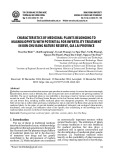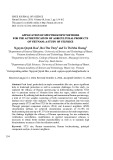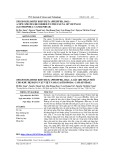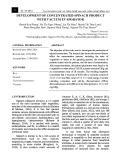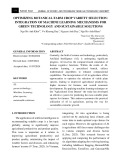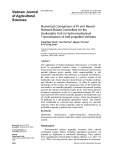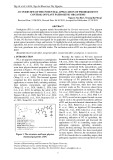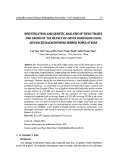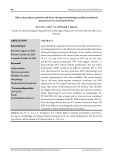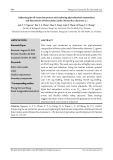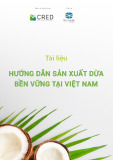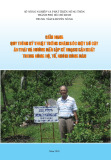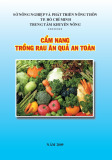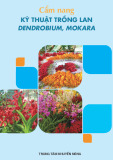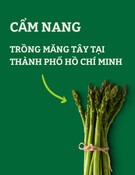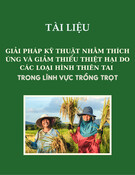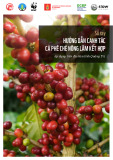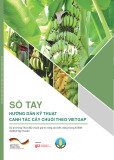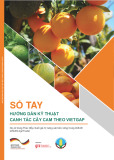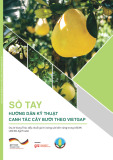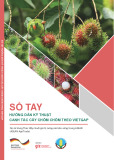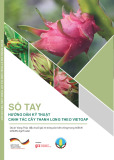
Int.J.Curr.Microbiol.App.Sci (2020) 9(4): 1624-1629
1624
Original Research Article https://doi.org/10.20546/ijcmas.2020.904.190
Symptomatology and Disease Intensity of Various
Pyricularia grisea Isolates in Different Hosts
Tensirani Pradhan*, M. K. Mishra, Sandhyarani Nanda,
Biswajit Jena and Lipilipsa Priyadarshinee
Department of Plant Pathology, Odisha University of Agriculture and Technology,
Bhubaneswar, India
*Corresponding author
A B S T R A C T
Introduction
Rice (Oryza sativa L.) is a self-pollinated
cereal crop under family Poaceae. Rice is a
staple food and mainstay for the human
beings and their food security. It is widely
cultivated in India, China, Indonesia,
Bangladesh, Vietnam, Thailand, Myanmar,
Japan, Philippines and Brazil. In India it is
cultivated in all the states mainly in kharif and
rabi season.
Rice is prone to many pests and diseases
which cause huge losses annually worldwide.
Among all fungal diseases of rice, blast
caused by Pyricularia grisea is of significant
International Journal of Current Microbiology and Applied Sciences
ISSN: 2319-7706 Volume 9 Number 4 (2020)
Journal homepage: http://www.ijcmas.com
Rice (Oryza sativa L.) is an important cereal crop and prone to many diseases out
ofwhich, rice blast caused by Pyricularia grisea is of significant economic
importance due to its destructive nature leading to serious yield loss. Blast infected
leaves of rice, Panicum grass and finger millet were collected from different fields
of OUAT farm, Bhubaneswar. Typical eye shaped or diamond shaped spots with
pointed ends and ashy white center with reddish brown margin appeared on the
leaves of rice, Panicum repens and finger millet. Different isolates of Pyricularia
grisea from rice, Panicum and finger millet were isolated on oat meal agar and
their cultural characteristics were studied. Pin prick method was followed to prove
pathogenicity test and cross inoculation test produced typical symptoms at 15 days
after inoculation. P. grisea isolates from rice, finger millet and Panicum repens
produced maximum disease intensity (78.52, 85.18, 81.48 PDI) in their respective
hosts respectively. P. grisea isolates from rice and finger millet could not cause
significant damage when inoculated in finger millet and rice plant respectively. P.
grisea isolates from Panicum caused higher disease score of 4.07 (PDI 45.18) in
rice than rice blast isolate in Panicum grass (score 2.67, PDI 29.62).
Keywords
Symptomatology,
Disease intensity,
Host diversity,
Pyricularia grisea
Accepted:
12 March 2020
Available Online:
10 April 2020
Article Info

Int.J.Curr.Microbiol.App.Sci (2020) 9(4): 1624-1629
1625
economic importance. Serious yield losses
due to epiphytotic of blast disease have been
recorded in different regions of India. In India
first outbreak of blast was reported in 1918 in
Tanjore district of Tamil Nadu and the
estimated loss was 69% (Thomas and
Krishnaswamy, 1948). In 1952, rice crop was
completely wiped out in Deras Farm of
Odisha. The fungus Pyricularia grisea attacks
at all stages of the crop and symptoms appear
on leaf (leaf blast), collar region (collar blast),
panicle neck node (neck rot) and panicle
(panicle blast).
The symptoms are more severe in case of
neck blast characterized by the infection at the
panicle base followed by rotting. Leaf blast
also is the most severe form of the disease
causing yield loss. Rice is cultivated in all the
three types of land i.e. upland, medium land
and low land in both transplanted and
broadcasting condition.
Rice based weeds i.e. Cyperus difformis,
Cyperus iria, Cyperus rotundus, Digitaria
setigera, Panicum repens and many others
pose a great threat in terms of nutrient uptake
and serving as collateral host of many fungal
diseases of rice including blast. An
experiment was conducted in the department
of Plant Pathology, College of Agriculture,
Bhubaneswar, Odisha with different
Pyricularia grisea isolates collected from
Panicum repens, rice and finger millet. Cross
inoculations were made to see the intensity of
blast disease in different hosts.
Materials and Methods
Collection of disease samples and Isolation
of pathogen
Blast infected rice and Panicum grasses were
collected from different fields of OUAT farm,
Bhubaneswar during the month of October
and November 2018. Blast infected finger
millet leaves were collected from Centre for
Pulses Research Station, Berhampur, OUAT.
All the samples were collected carefully in
polythene bags separately and brought to the
laboratory for further study. The necrotic
patches on the diseased leaves of rice,
Panicum repens and finger millet were cut
into small pieces having both healthy and
diseased portion, surface sterilized by dipping
in 0.1% mercuric chloride solution for 40
seconds and washed three times with
sterilized water. The cut pieces were
transferred to a sterilized petri dish containing
oat meal agar medium aseptically and
incubated at 27±1°C for the development of
fungal growth. Hyphal tip method was
subsequently followed two to three times to
get pure culture of the pathogen. Pure culture
of the fungus was transferred to oat meal agar
slants from the petriplate in aseptic condition.
These slants were incubated at room
temperature for the growth of the fungus and
then stored in refrigerator for future study.
Identification and maintenance of pure
culture
The fungus was identified according to
available literature. Pure culture of the test
fungus was sub-cultured on oat meal agar
slants and incubated at 27±10C for the growth
of the fungus. These slants were preserved in
refrigerator and sub-cultured every 30 days.
Pathogenicity test
Paddy and finger millet seeds were sown in
earthen pots containing equal amount of
sterilized soil and FYM (1:1). After
emergence of the seedlings, artificial
inoculation was done in growing seedlings.
Seedling of Panicum grass were collected
from the field and planted in pot and
inoculated with respective Pyricularia grisea
isolates. Pin prick method was followed for
conducting pathogenicity test. In this method

Int.J.Curr.Microbiol.App.Sci (2020) 9(4): 1624-1629
1626
the leaves of test plants were cleaned with
water and surface sterilized with 0.1%
mercuric chloride solution with the help of
cotton swab. These leaves were then
subsequently washed with sterile water to
remove the presence of excess mercuric
chloride and allowed to dry. The upper as
well as lower surface of the leaves was gently
injured with the help of a sterilized needle.
Spore suspension of ten days old culture of
the test fungus was prepared and cotton swab
was dipped in the spore suspension and
spread on the upper and lower surfaces of the
leaves.
The plants were tied with polythene cover and
a cotton swab dipped in sterile water was
placed inside it to provide humidity for
development of disease symptoms. These
plants were then labeled to distinguish them
from control plants. The observations were
recorded at 15 days after inoculation of the
pathogen.
Cross inoculation test in different hosts
Seedlings of different hosts viz. rice, finger
millet and Panicum repens were grown in
nine pots (3 pots each) containing 5 plants/
pot. One month old seedlings were selected
for artificial inoculation of respective isolates
of Pyricularia grisea. Spore suspension of
Pyricularia grisea from 10 days old culture
was inoculated in the leaves of host plants by
pin prick method. In rice plant, Pyricularia
grisea isolate from Panicum grass (PPg) and
Finger millet (FPg) were artificially
inoculated by pin prick method. Similarly
Finger millet plant was inoculated with
Pyricularia grisea isolate from rice (RPg) and
Panicum grass (PPg) and Panicumgrass was
inoculated with Pyricularia grisea isolate
from rice (RPg) and Finger millet (FPg) to
conduct cross inoculation test. Observations
were recorded after 15 days of inoculation
using the following scales as per Directorate
of Rice Research (DRR), Hyderabad (Table
1).
Table.1 SES Scale for leaf blast
Score
Description
0
No lesions
1
Small brown specks of pinhead size without sporulating centre.
2
Small roundish to slightly elongated, necrotic grey spots, about 1-2 mm in
diameter with a distinct brown margin and lesions are mostly found on the lower
leaves.
3
Lesion type is the same as in scale 2, but significant number of lesions are on the
upper leaves.
4
Typical sporulating blast lesions, 3 mm or longer, infecting less than 2% of the
area.
5
Typical blast lesions infecting 2-10% of the leaf area.
6
Blast lesions infecting 11-25% leaf area.
7
Blast lesions infecting 26-50% leaf area.
8
Blast lesions infecting 51-75% leaf area.
9
More than 75% leaf area affected.

Int.J.Curr.Microbiol.App.Sci (2020) 9(4): 1624-1629
1627
The percent disease index (PDI) was
calculated by using following formula
Results and Discussion
Symptomatology
The symptoms on rice leaves appeared as
elliptical diamond shaped or eye shaped spots
with pointed ends. The center of the spots was
grey or whitish in colour with brown or
reddish brown margin. Manibhushan Rao
(1994); Casilla et al., (2009) and
Padmanabhan (1974) reported similar
symptoms in rice plant. Bonman et al., (1989)
also reported the symptoms appeared on
leaves, nodes, neck and panicles and
symptoms were more severe in case of neck
blast characterized by the infection at the
panicle base followed by rotting. In the
present investigation larger spindle shaped
spots of 2-5mm length was found in Panicum
leaves which were relatively larger than that
of rice and finger millet. Finger millet blast
symptoms were relatively wider than rice and
Panicum repens.
Pathogenicity test
Rice and finger millet seeds were collected
and grown in pots for about one month.
Similarly small seedlings of Panicum repens
were collected and raised in pots for
conducting pathogenicity test. One month old
seedlings of rice, finger millet and Panicum
repens were inoculated with pure culture of
Pyricularia grisea isolates from rice, finger
millet and Panicum repens respectively by
pin prick method and covered with polythene
for the expression of the symptoms. Typical
symptoms of water soaked, eye shaped spots
with ashy center and dark brown margin were
developed after 15 days of inoculation. More
eye shaped symptoms were developed in the
rice plant and coalesced to each other leaving
large patches. Symptoms developed in
Panicum repens were little rounded to oval
and distributed more towards the middle with
non-coalescing nature and larger than
symptoms produced on rice and finger millet.
Symptoms produced in finger millet were
little different from those of rice and Panicum
repens. Round to oval patches with dark
brown margin and whitish black center were
observed in leaf lamina 15 days after
inoculation. The individual patches were
much larger than that developed on rice and
Panicum repens. Yoshida et al., (1992) also
carried out punch method to the leaf blades of
rice for production of symptoms. Workers
like Kamalakannan et al., (2001) and Uddin et
al., (2003) proved pathogenicity by spraying
spore suspension with hand atomizer and
sprayer respectively to get the symptoms.
Host diversity study
It was found that Pyricularia grisea isolates
from rice, finger millet and Panicum repens
produced maximum disease intensity in their
respective hosts (Table 2). Maximum PDI of
78.52% was observed by Pyricularia grisea
from rice in rice plants. Pyricularia grisea
from Panicum repens and finger millet
produced disease scores of 4.07(45.18 PDI)
and 1.47(16.29 PDI) in rice host respectively
suggesting little incompatibility of finger
millet blast in rice. Pyricularia grisea from
Panicum repens and finger millet also
recorded highest PDI of 81.48% and 85.18%
in their respective hosts. Pyricularia grisea
from rice could produce least disease in finger
millet with as low as 1.27 (14.07 PDI) disease
score. It was found that Pyricularia grisea
from rice and finger millet could not cause
significant damage when inoculated in finger
millet and rice respectively.

Int.J.Curr.Microbiol.App.Sci (2020) 9(4): 1624-1629
1628
Table.2 Disease reaction of different isolates of Pyricularia grisea against various hosts
Isolates of
Pyricularia grisea
Hosts
Rice
(Oryza sativa)
Panicum grass
(Panicum repens)
Finger millet
(Eleusinecoracana)
Score
PDI**
Score
PDI
Score
PDI
RPg*
7.07
78.52
2.67
29.62
1.27
14.07
PPg
4.07
45.18
7.33
81.48
6.07
67.40
FPg
1.47
16.29
5.87
65.18
7.67
85.18
* RPg – Pyricularia griseafrom Rice, PPg – Pyricularia griseafrom Panicum repens, FPg –Pyricularia grisea from
Finger millet ** PDI – Percent Disease Index
78.52
29.62
14.07
45.18
81.48
67.4
16.29
65.18
85.18
0
10
20
30
40
50
60
70
80
90
Rice Panicum repens Finger millet
RPg PPg FPg
Figure.1 Percent Disease Index of Pyricularia grisea on different hosts
The finding was supported by Viji et al.,
(2000); Kato et al., (1977) and Todman et al.,
(1994). They reported that P. grisea from rice
did not infect finger millet and vice versa.
Pyricularia grisea from Panicum repens and
rice when inoculated into each other’s host
produced moderate symptoms with PDI of
45.18% and 29.62% respectively.
Prabhu et al., (1992) reported P. grisea from
weeds to be pathogenic to rice which
confirmed the present investigation. Takan et
al., (2004) reported P. grisea from weeds to
be pathogenic to finger millet. In the present
study Pyricularia grisea from finger millet
and Panicum repens produced nearly similar
disease score of 5.87 and 6.07 when
inoculated in Panicum repens and finger
millet respectively.
This suggested that P. grisea isolates from
finger millet and Panicum grass can infect
each other and would be regarded as source of
blast pathogen in a particular area. In the
current study it was also observed that
Pyricularia griseafrom Panicum repens
caused higher disease score (4.07) in rice than
rice blast isolate in Panicum grass (2.67). It
indicated Panicum blast to be highly virulent
than rice blast (Table 1).

